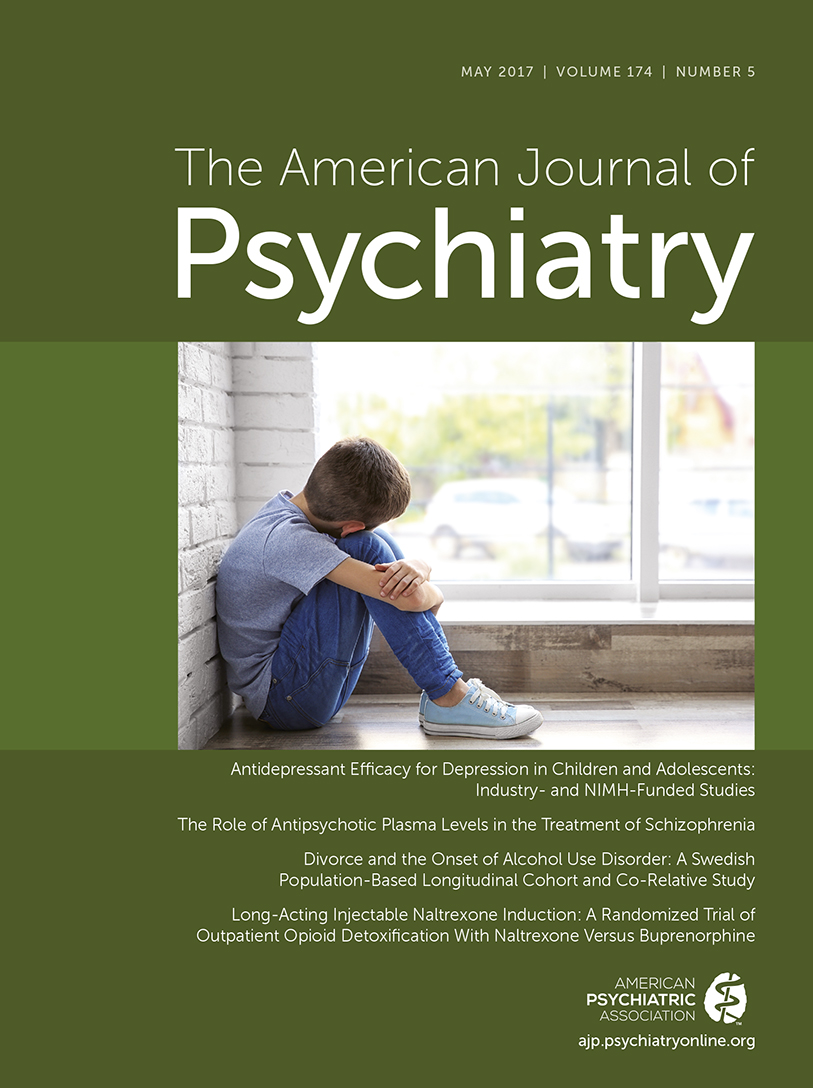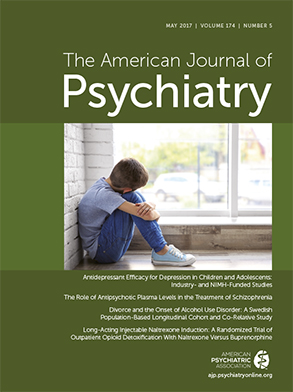Psychiatric epidemiologists have long observed that married adults have fewer mental health problems compared with unmarried age peers (
1). There are two broad categories of explanation for the positive association between marital status and health: social selection and social causation (
2). Social selection describes processes in which healthier individuals are more likely to marry and stay married. Social causation refers to processes in which marriage improves health. Randomized experiments testing marriage effects are not ethical. Cross-sectional studies cannot disentangle selection from causation (
3). Instead, researchers have turned to prospective cohort studies that follow individuals from before marriage, into their married lives. The prospective longitudinal design can account for premarriage health differences and test if getting married is associated with health improvement or slower health decline compared with remaining unmarried. Prospective studies find clear evidence for social selection, but they also find evidence for social causation (
4,
5); people who marry are healthier than peers who remain unmarried, but after accounting for these differences, marriage benefits health. However, there are few prospective data to address the association of marriage with psychiatric disorders. Because individual disorders affect only small portions of the population, cohort studies typically lack power for such analysis. National registers, which record official data on entire populations, provide an alternative.
Start and end dates of marriages are legal records. In countries with national health systems, disorder diagnosis and treatment are also recorded. Linked register analysis can examine whether individuals who get and stay married are less likely to “register” indications of disorder compared with individuals who do not marry or who get divorced. In this issue of the
Journal, Kendler and colleagues analyze register data from Sweden to test whether divorce increases risk for alcohol use disorder (AUD) (
6).
The authors constructed histories of divorce, remarriage, and AUD in people born in 1960–1990, married from 1990 onward, with no AUD history prior to marriage (N=942,366). Swedish hospital discharge, outpatient care, primary health care, prescribed drug, crime, and suspicion registers were linked to evaluate AUD incidence through 2011. Over 20 years of follow-up, 16% of men and 17% of women were divorced. AUD registration, determined from ICD codes, records of disulfiram, acamprosate, or naltrexone prescription, or conviction or suspicion of at least two alcohol-related crimes, was recorded in 1.1% of men and 0.5% of women. Survival analysis tested if divorce increased risk for AUD relative to remaining married. Record linkages with census data, the Multi-Generation Register, and the Swedish Twin Register were used for covariate-adjusted and co-relative comparison analyses to address confounds.
Divorce predicted a six- to sevenfold increase in risk for first AUD registration relative to individuals of the same age and sex who stayed married. This association was not accounted for by measures of prior deviant behavior, family history of AUD, or parental education. The association was significantly reduced among individuals married to spouses with AUD histories.
AUD risk among divorced persons increased in the years leading up to divorce, peaked in the divorce year, and remained elevated for over a decade in those who remained unmarried. For those who remarried, AUD risk declined substantially. These findings are consistent with AUD as a cause of divorce and barrier to remarriage (i.e., reverse causation). However, parallel analysis of widowhood, which is less likely to be caused by AUD, showed similar results. The predivorce increase in AUD risk may reflect other causes of divorce (e.g., marital discord) (
7).
Genetic factors explained some of the divorce-AUD association. Analyses comparing divorced individuals to still-married siblings and cousins estimated that about half of the sixfold increase in AUD risk associated with divorce was attributable to genetic causes, about the same result reported in a biometric analysis published by these authors (
8). Individuals with prior deviant behavior and/or a family history of AUD were more likely to develop an AUD following divorce compared with same-aged peers without these risk factors. Whether this heterogeneity reflects gene-environment interaction or synergies among nongenetic risks was not examined in this study.
Results are broadly consistent with a previous register study by the same authors testing protective effects of marriage on AUD (
9). As in this study, estimated effects were large, even after adjusting for potential confounders and re-estimating associations within families. Also in parallel, the effect of marriage on alcohol-related problems was largest for individuals with a family history of AUD. Taken together, results suggest that marriage and divorce are clinically significant factors in the development of AUD. Moreover, while social selection contributes to the association between marriage/divorce and AUD, a portion of marriage-/divorce-associated AUD risk may reflect social causation.
We highlight two considerations in interpreting findings. First, register analysis may fail to observe some AUD cases. For example, past-year prevalence rates of DSM-5 AUD among married and divorced/widowed/separated individuals in the National Epidemiologic Survey on Alcohol and Related Conditions-III were about 10% (
10), compared with the approximately 1% observed in this sample. Milder cases that do not result in treatment seeking or criminal behavior may go under-observed, as will cases occurring in individuals who face barriers to treatment. The Swedish health system provides free access to care, but other barriers may exist (e.g., stigma) (
11). Second, many individuals in the cohorts studied by Kendler and colleagues never married, and those who did tended to marry in their late twenties or early thirties (
12). Although patterns of AUD involvement vary across countries, AUD typically onsets prior to the age of marriage in this Swedish sample (
10,
13). Kendler and colleagues’ analysis may be most informative for understanding the minority of alcohol problems with later onset.
Clinically, the results affirm the importance of AUD screening among patients going through divorce, particularly those with prior conduct problems or family AUD history. Results also highlight opportunities for prevention (
14). Providing psychoeducation regarding the association between divorce and AUD, early AUD indicators, and healthy drinking practices to individuals experiencing marital distress or divorce may help reduce alcohol-related problems. These findings do
not suggest that clinicians should encourage patients to remain married to prevent AUD. However, to the degree that spouses are protective, intervention to promote positive marital dynamics may prove to be an effective strategy for prevention. Couples interventions exist for treatment of AUDs after they have onset (
15). Intervening earlier may help prevent AUDs.
Future research is needed to identify mechanisms by which marriage reduces AUD risk. Fostering of protective features of marriage within existing marital or other social relationships (
16) could offer a universal approach to AUD prevention. One mechanism highlighted by Kendler and colleagues is monitoring. AUD-related psychological processes influenced by social relationships also deserve consideration. Genetic analysis of heterogeneity in divorce-related AUD risk may inform understanding of etiology and guide intervention. Recent genome-wide association studies of AUD suggest progress toward identifying molecular genetic risks (
17). Follow-up using gene-environment interaction designs within very large genetic databases, such the UK Biobank (
18), or genetically informed studies of spouses, such as the U.S. Health and Retirement Study (
19), should be a priority.
Kendler and colleagues’ analysis, employing multiple complementary methodologies within a large registry data set, provides evidence that divorce increases risk for AUD. Results can inform clinical and public health efforts toward prevention and guide research into the social and genetic etiology of AUD.

